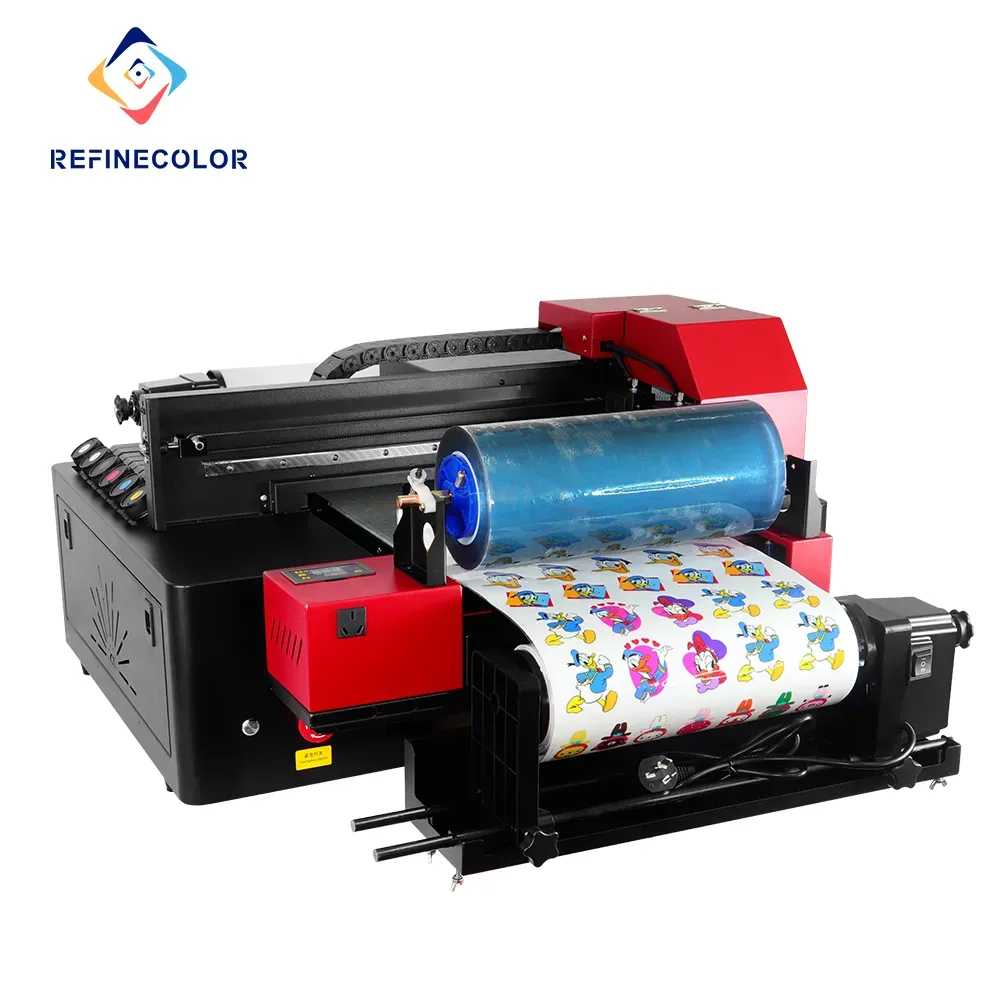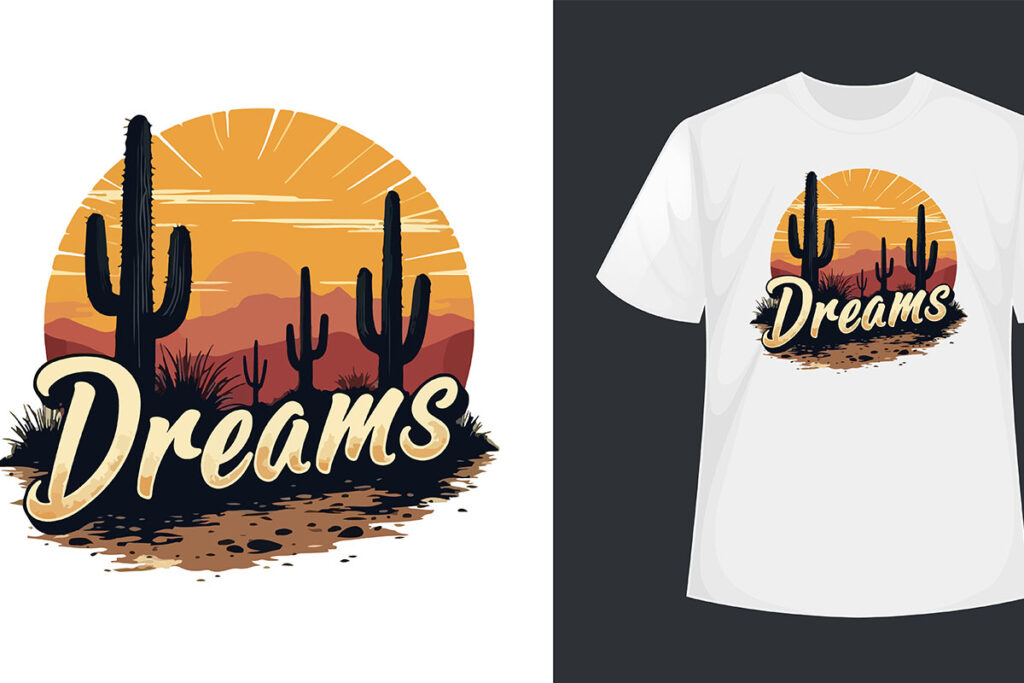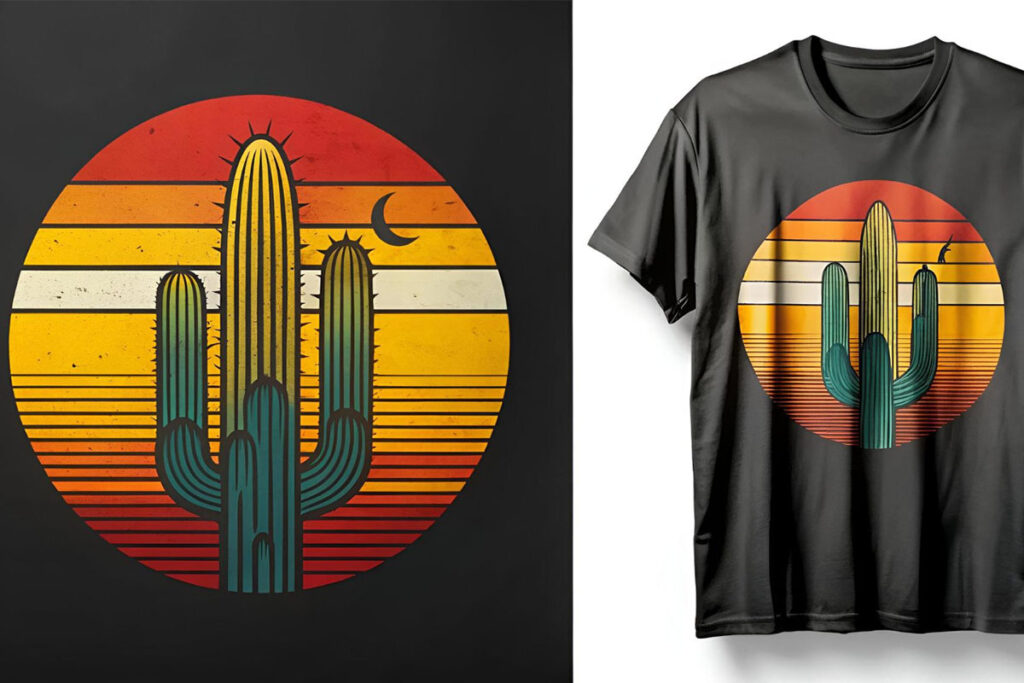If you’ve recently come across the term “UV DTF,” you’re stepping into the world of ultraviolet direct-to-film printing, a revolutionary technique reshaping the way we think about custom printing. This cutting-edge UV printing technology merges the strengths of direct-to-film printing with the benefits of vibrant, durable graphics, making it a top choice for various applications. Whether you’re an aspiring entrepreneur or a printing enthusiast, understanding UV DTF opens up a plethora of creative possibilities and commercial opportunities. Known for its eco-friendly printing capabilities, UV DTF not only minimizes waste but also delivers high-quality results on diverse materials, from fabric to glass. In this guide, we will explore the essential aspects of UV DTF, including its operation, advantages, and market trends, positioning you to dive into this exciting printing revolution.
As we delve deeper into the fascinating realm of UV DTF, also recognized as ultraviolet direct-to-film, it’s important to note its increasing popularity in the printing sector. This innovative printing method is celebrated for its ability to produce exquisite designs with remarkable clarity and durability. Often referred to in industry circles as direct-to-film printing, this technology enables artists and entrepreneurs to achieve stunning results while maintaining a commitment to eco-friendly practices. By utilizing UV printing technology, users can transfer detailed graphics onto a variety of substrates, expanding the horizons of custom apparel printing and other markets. Join us as we unravel the intricacies of this powerful printing solution and discover how it might transform your creative projects.
Understanding UV DTF Technology
UV DTF (Ultra Violet Direct-to-Film) technology combines the striking effects of UV printing with the versatility of film transfers. This innovative technique is not just about applying ink on various materials but creating vivid, high-quality images that can withstand the test of time. Popular among custom apparel printing endeavors and promotional products, UV DTF caters to a range of substrates, from fabrics to metals and even glass. It opens a realm of possibilities, allowing businesses to diversify their offerings and meet customer demands for unique and visually appealing designs.
Unlike traditional printing methods, where inks take time to dry, UV DTF utilizes UV-curable inks that immediately solidify when exposed to UV light. This leads to quicker turnaround times and enables high-volume production without sacrificing quality. Furthermore, the ability to print directly onto high-quality transfer films enhances the versatility of this printing method, making it an ideal solution for an array of products in the market.
The Benefits of UV DTF Printing
One of the standout features of UV DTF printing is its incredible versatility. Not only can businesses create custom designs on a wide range of materials, but the durability of UV-printed designs ensures that they maintain their vibrancy over time. This resistance to fading, scratching, and peeling is particularly beneficial for apparel that may undergo regular washes, making UV DTF a prime choice for custom apparel printing. As a result, many companies are turning toward this technology to elevate their product offerings.
In addition to versatility and durability, UV DTF is an eco-friendly printing solution. Many UV inks have low levels of volatile organic compounds (VOCs), making them a greener alternative compared to traditional inks. This conscious choice appeals to environmentally responsible consumers and businesses striving to minimize their ecological footprint. By adopting UV DTF, companies can not only meet customer preferences but also contribute to a more sustainable printing industry.
Equipment Needed for UV DTF Printing
To venture into UV DTF printing, it’s crucial to invest in the right equipment that aligns with your business goals. This begins with a specialized UV DTF printer equipped with high-performance UV curing lamps. These components are essential for ensuring that the ink cures correctly, resulting in high-quality prints that adhere well to the transfer film. Additionally, selecting the appropriate transfer films and inks specifically designed for UV DTF printing will further enhance your print quality and overall performance.
Alongside the printer and materials, implementing graphic design software like Adobe Illustrator or CorelDRAW is necessary. These tools allow you to create designs that maximize the unique aspects of UV DTF technology. Familiarity with such software can significantly affect your output, making professional-looking designs that can translate beautifully on various substrates. Therefore, understanding your equipment and software is fundamental for success in UV DTF printing.
Market Trends in UV DTF Printing
As of 2024, UV DTF printing is experiencing a surge in popularity, particularly in the custom apparel sector and promotional products. The growing demand stems from the technology’s ability to produce vibrant, high-quality graphics rapidly, making it cost-effective for both small-scale projects and larger orders. The scalability of UV DTF printing is appealing to entrepreneurs looking to enter the custom printing market, as it allows for flexibility in production while maintaining quality.
This increasing trend has prompted manufacturers to innovate and optimize UV DTF technology continually. Innovations may include improvements in printing speeds, enhanced ink formulations, and better overall cost-effectiveness without compromising print quality. As businesses increasingly recognize the value and efficiency of UV DTF printing, its position within the market is only set to strengthen further.
Getting Started with UV DTF Printing
Embarking on a journey into UV DTF printing can be exciting yet daunting. If you’re eager to get started, the first step is to assess your budget and understand the investment required. Purchasing a specialized printer, inks, and transfer films can involve significant upfront costs. Being aware of ongoing maintenance and operational costs is equally important to ensure smooth business operations as you begin your printing venture.
Moreover, training plays a vital role in successfully navigating the UV DTF landscape. Various online resources, tutorials, and workshops can help you familiarize yourself with the printer and application software. Gaining practical knowledge and technical skills not only enhances your proficiency but also builds confidence as you create custom designs and engage with your customer base effectively.
The Future of UV DTF Printing
Looking ahead, UV DTF printing shows no signs of slowing down as it continues to evolve with advancements in technology and consumer expectations. As businesses adapt to accommodate this innovative method, we can anticipate wider applications across different industries. Fashion designers, marketing agencies, and promotional product companies are just a few sectors poised to benefit from the capabilities of UV DTF technology.
Furthermore, the eco-friendly aspect of UV DTF printing aligns well with the growing trend towards sustainability in the business world. As consumers become more environmentally conscious, companies embracing UV DTF technology can cater to this shift, appealing to a market that values sustainable practices. The convergence of durability, versatility, and eco-friendliness positions UV DTF as a formidable player in the custom printing realm, sure to attract interest for years to come.
Frequently Asked Questions
What is UV DTF and how does it work?
UV DTF, or UV direct-to-film printing, combines UV printing technology with transfer films to create vibrant graphics. The process involves designing a graphic, printing it on a special film with UV inks, curing the ink with UV light, and then transferring the cured design onto various surfaces like fabric or metal.
What are the advantages of using UV DTF technology in custom apparel printing?
UV DTF offers several benefits for custom apparel printing, including versatility in printing on various materials, durability against fading and scratching, and eco-friendly options with lower VOCs. These features make UV DTF an ideal choice for businesses looking for high-quality and long-lasting prints.
Is UV DTF a cost-effective solution for small printing businesses?
Yes, UV DTF printing is considered cost-effective, particularly for small printing businesses. This method allows for fast production of vibrant graphics, suitable for both small runs and large orders, resulting in quicker turnaround times and reduced operational costs.
What equipment is necessary for starting UV direct-to-film printing?
To start UV DTF printing, you will need a specialized UV DTF printer equipped with UV curing lamps, suitable transfer films, UV inks, and graphic design software such as Adobe Illustrator or CorelDRAW to create your designs.
How does UV DTF compare to traditional printing methods?
UV DTF printing offers superior print quality and durability compared to traditional methods. The immediate curing of UV inks under UV light results in bright, long-lasting prints that resist fading and damage, while traditional methods may not provide the same level of vibrancy or speed.
What are the environmental benefits of UV DTF printing?
UV DTF printing is generally more eco-friendly than other printing methods due to its use of UV inks that contain lower levels of volatile organic compounds (VOCs). This reduces harmful emissions, making it a more sustainable choice for environmentally conscious consumers.
| Key Points | Details |
|---|---|
| Introduction | Explains UV DTF as a printing technology gaining popularity for its adaptability and eco-friendliness. |
| What is UV DTF? | A printing method that combines the durability of UV printing with the flexibility of transfer films, capable of printing on various surfaces like fabric and metal. |
| How Does UV DTF Work? | Involves creating designs, printing on special films with UV inks, curing the prints with UV light, and transferring them to substrates. |
| Advantages | Versatile, durable, and eco-friendly; UV DTF prints resist fading, peeling, and are made with lower VOCs. |
| Essential Equipment | Requires a specialized UV DTF printer, appropriate transfer films and inks, and graphic design software. |
| Market Trends | Increasing demand in 2024, especially for custom apparel and promotional products, due to quality and speed. |
| Getting Started | Invest wisely in equipment, train on usage, and research the market for insights into customer needs. |
Summary
UV DTF is quickly becoming a prominent choice in the printing industry, offering versatility and eco-friendliness that appeal to both new entrepreneurs and established businesses. This technology is designed to produce high-resolution prints across various surfaces, enhancing creativity and efficiency. Its benefits, including durability and lower environmental impact, make UV DTF an attractive solution for custom printing needs. By understanding the fundamentals of UV DTF technology, one can effectively explore its applications and stay ahead in the rapidly evolving market.



